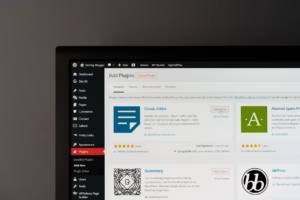Curious about headless WordPress? Here’s a simple, non-technical guide that explains what headless (or decoupled) WordPress is, how it works, and why businesses use it for high-performance websites.
Imagine a Toy Robot
Picture a toy robot:
- The body has all the batteries, wires, and power.
- The head talks, shows emotions, and interacts.
Now imagine you remove the robot’s head and put on a new one—maybe a superhero head or a dinosaur head. The body stays the same, but the head changes how it looks and interacts.
That’s how headless WordPress works.
What is Headless (Decoupled) WordPress?
In traditional WordPress, the frontend (what users see) and the backend (where you manage content) are tightly connected.
Headless WordPress separates the frontend (“head”) from the backend:
- The backend remains WordPress—where you manage content and plugins.
- The frontend can be any technology: React, Next.js, Vue, Angular, or a mobile app.
This decoupling allows for more flexibility, speed, and customization.
Why Businesses Use Headless WordPress
Businesses adopt headless setups for several reasons:
- Speed & Performance: Modern frameworks make sites ultra-fast.
- Scalability: One backend can serve multiple apps, sites, and devices.
- Better Security: Separation limits hacker access.
- Developer Freedom: Frontend isn’t limited by WordPress themes.
- Future-Proofing: Redesign frontend anytime without changing content.
When Does Headless WordPress Make Sense?
Headless isn’t for every website. It shines when:
- Large brands need multi-platform publishing.
- Custom web apps require WordPress as a content engine.
- Fast speed and advanced user experiences are essential.
- You’re building SaaS dashboards, marketplaces, or mobile-first experiences.
Simple Example: Pizza Shop Analogy
Imagine your WordPress site as a pizza shop:
- The kitchen (WordPress backend) makes the pizzas.
- Normally, pizzas go directly to your dining tables (WordPress frontend).
- With headless, pizzas can be delivered to tables, food trucks, mobile apps, and even drones.
The kitchen stays the same, but where customers consume the product changes.
Headless WordPress vs Traditional WordPress
| Feature | Traditional WordPress | Headless WordPress |
|---|---|---|
| Frontend | Themes, page builders | Any tech (React, Vue, etc.) |
| Speed | Depends on hosting/plugins | Ultra-fast with JS frameworks |
| Flexibility | Limited to WP ecosystem | Unlimited frontend freedom |
| Best For | Blogs, SMB sites, portfolios | SaaS, enterprise, multi-channel |
| Complexity | Beginner-friendly | Developer-heavy |
The Downsides
- Higher Cost: Skilled developers are required.
- More Complexity: Setup is not plug-and-play.
- Maintenance: Two systems (frontend + backend) need updates.
It’s powerful but not always practical for small businesses.
Final Thoughts: Should You Go Headless?
- Small businesses or solo entrepreneurs: Stick with traditional WordPress (blocks, page builders, or classic themes).
- Agencies, SaaS, or enterprises: Headless WordPress offers speed, scalability, and future-proofing.
At WP Sprint, we guide businesses and agencies to choose the right WordPress setup—blocks, builders, or headless—for their goals.



